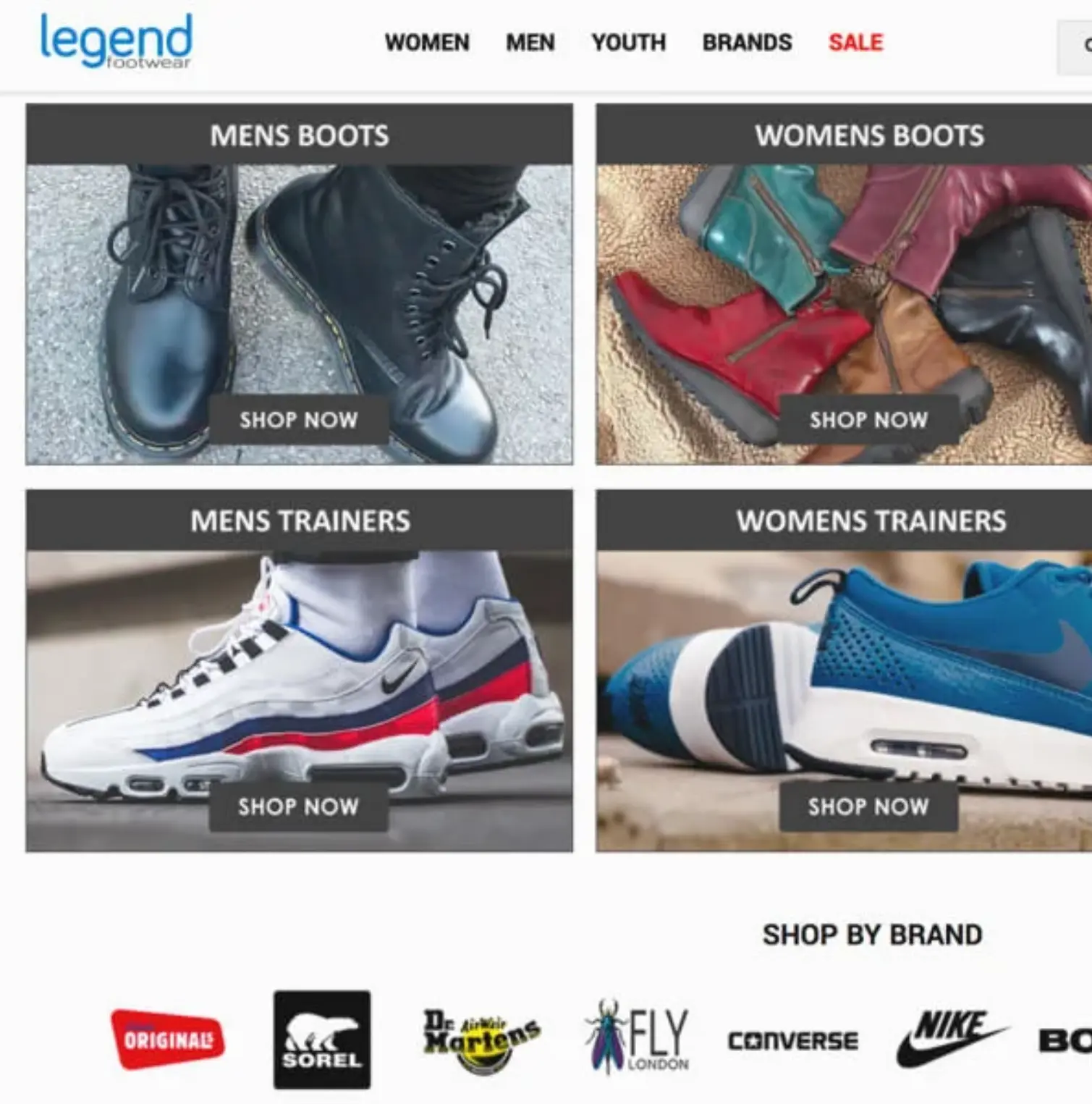The holiday season is the most exciting time of the year. Especially for eCommerce retailers, it’s a chance to boost their sales. Numbers speak the same. Here’s how the the retail commerce holiday season sales will increase according to eMarketer:
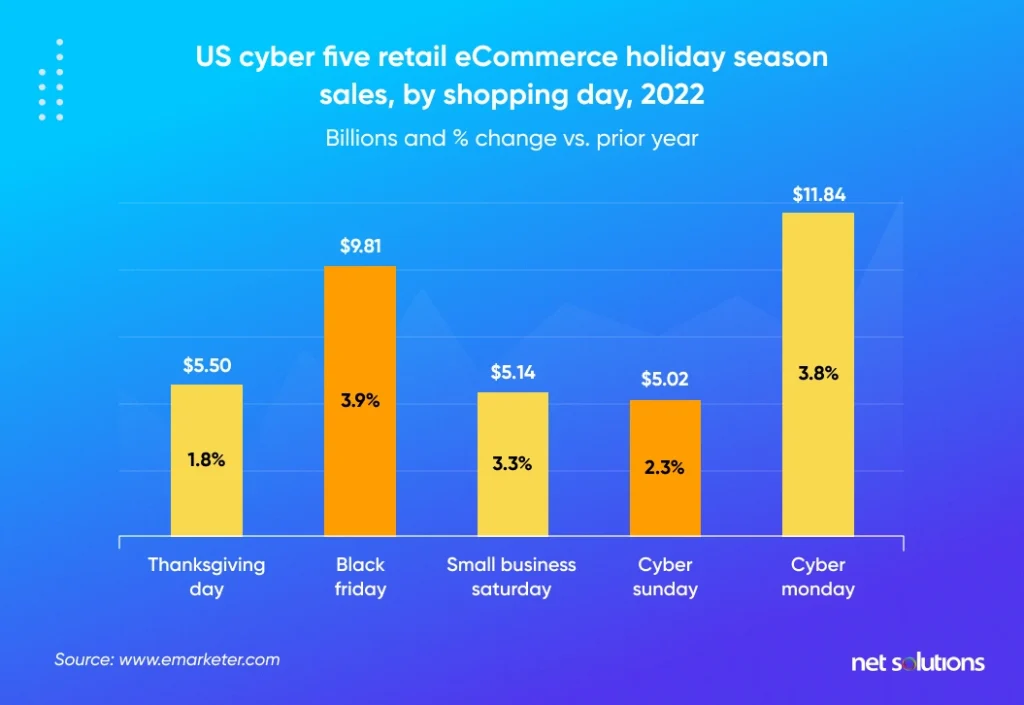
If you play your cards right, you can record this holiday season as the most prosperous year in your eCommerce business’s history. But what is it you need to do to boost your sales? You can start by referring to the 15-point checklist we’ve compiled for you. Let’s begin:
Even the big brands make mistakes, don’t repeat them
Use the code TGIF and get 50% off on all online orders.
Such generous offers are a major attraction during the holiday season. But they can also become a retailer’s worst nightmare if a website is unprepared to handle a sudden spike in traffic.
This happened with the renowned fashion retailer J.Crew a few years back; They offered a TGIF 50% off deal on Black Friday, hoping to draw people to their website. However, what was supposed to become a TGIF (Thank Goodness, it’s Friday) quickly became ‘God, Why it’s Friday (GWIT)’ when their online shoppers got hit with a “Hang on a Sec” screen. Shoppers could not shop for anything as the site experienced significantly more traffic than the fashion retailer had anticipated.
This technical glitch stretched for a significant part of the day on Black Friday, leaving customers frustrated and costing the company as much as $775,000 in sales!
It was one of the worst nightmares of J.Crew. They even released a statement through social media apologizing for the delays.
If you don’t want to suffer J.Crew’s fate this holiday season, there are two words of advice: Be Prepared. Otherwise, you would lose not just the revenue but your reputation as well.
Here’s what you should do this holiday season instead to boost conversions, reduce friction in the buyer’s journey and strike it rich:
1. Do your homework on time
A stitch in time saves nine; this old saying fits right when it comes to organizing the holiday sale on eCommerce websites. As we have year-round sales going on and almost all our sales-boosting strategies are somewhat used up, it is crucial to adopt and implement some innovative approaches for the festive season.
It is good to be prepared even before the holiday season starts. It would ensure you don’t embarrass yourself in front of visitors or miss out on opportunities. Here’s what to do:
a. Prepare for enough backend support
“With opportunity comes responsibility.” – Winston Churchill
Retailers can expect 63% more visits to their website during the holiday season, which means you have an extra 63% chance to make a sale.
However, with increased traffic comes increased demand for back-end support. The biggest eCommerce challenge businesses face during this time is how we successfully maintain service levels.
They may have taken good care of their user interface infrastructure by beautifying the front end with attractive offers. Still, the support from the back end is one aspect that can permanently turn off the customer if not done right. Hiring outsourcing partners for this job could be a great help.

We respect your privacy. Your information is safe.
b. Improve your website loading speed
53% of online shoppers expect e-commerce pages to load in 3 seconds or less. – A Digital.com survey
Businesses can’t risk losing a potential customer on their site over the holidays because of a slow landing page.
The ideal situation would be to get the website to load in the blink of an eye. In 2012, Amazon lost 16 billion in sales by having a one-second lag on their website.
If the webpage loading speed lies between 500 milliseconds and 2 seconds, the user is likelier to perform the desired action on that web page. Basic page speed optimization measures can test and fix the website loading speed.
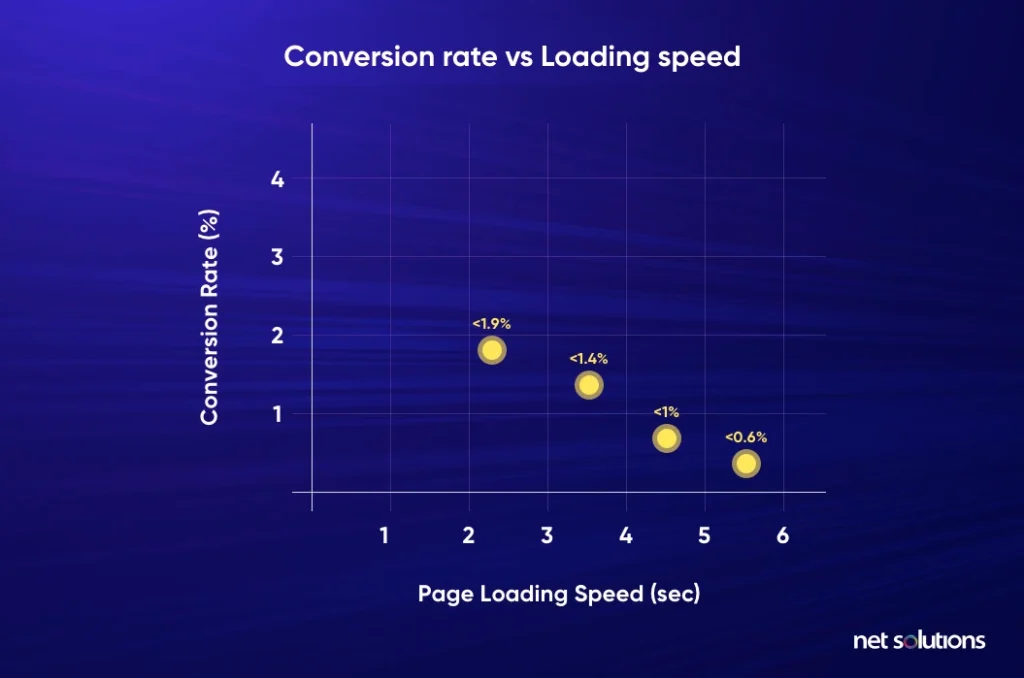
Google’s Page Speed Tool is an essential tool that can be a part of the holiday eCommerce website checklist. It checks the website’s performance and highlights where the website needs improvement.

C. Monitor the website’s analytics
Even if website analytics are ensured regularly, monitoring, observing, and drawing inferences from Google Analytics reports is crucial.
To get a clearer picture of the web design’s and content effectiveness, thorough analytics is vital.
Moreover, historical data generated from analytics can help in tracking sales trends. Nowadays, retailers can also do predictive analytics for sales and stay ahead of the trends. The discounts are determined by machine learning for predicted sales and how much volume purchased on the product would produce a good ROI.
A well-built dashboard integrated with predictive modeling can help achieve this quickly; add it to the holiday eCommerce website checklist.
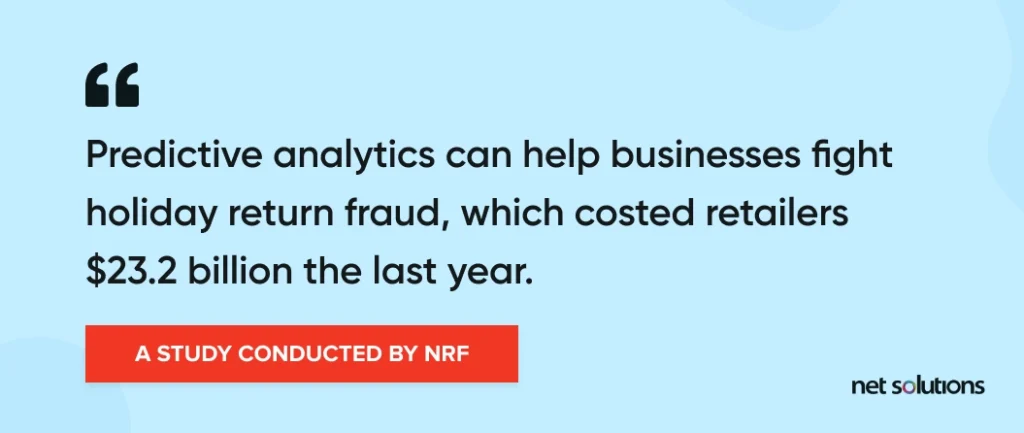
2. Attract traffic by promoting holiday-specific offers
The holiday season in 2024 will be about careful, consistent, customized marketing. The more targeted the approach, the better the impact on customers. Retailers must be very selective when deciding the methodology they want to take up this holiday season to boost their eCommerce store’s sales.
Keep a very calculative attitude while considering this parameter of the holiday eCommerce website checklist so that it doesn’t end up overdoing or underplaying the promotion schemes.
a. Prepare email marketing campaigns
Email Marketing campaigns are one of the best ways to improve sales and customer loyalty. It should be a vital part of the holiday eCommerce website checklist. Emails are considered one of the highest-converting promotion channels during the holiday season.
During 2019’s Black Friday Cyber Monday (BFCM) event, Shopify witnessed its highest conversion rates from email marketing.
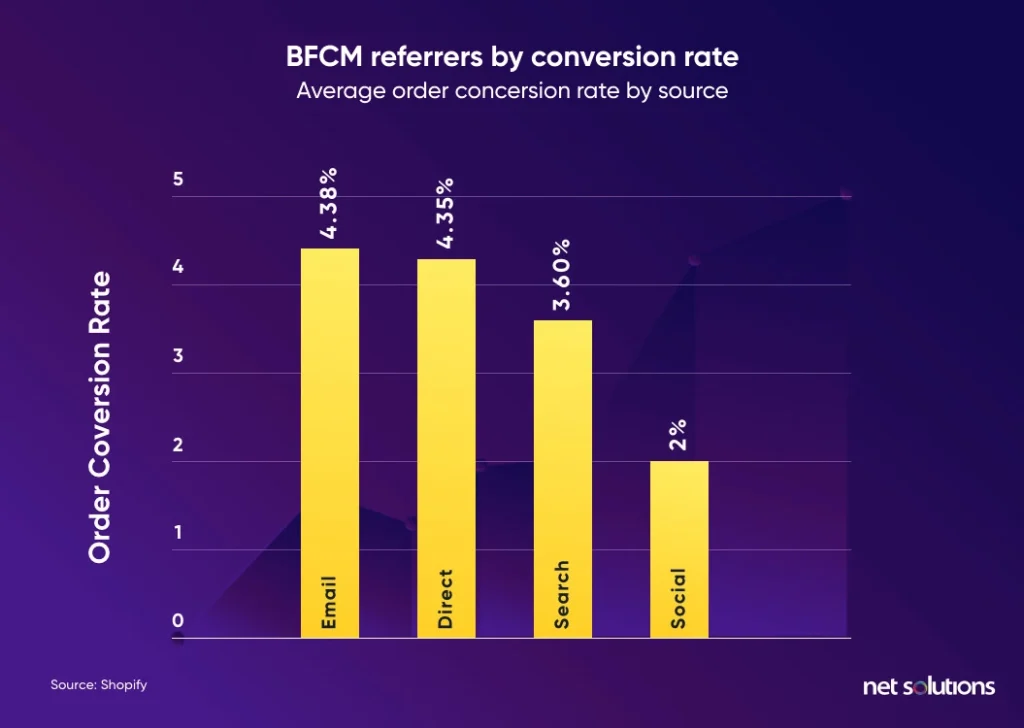
While sending an email to target customers, ensure that it offers relevant emotional or financial value. Emails should be attractive, fascinating, informative, and, most importantly, personalized for the buyer. Remember, email marketing should start two months before the holiday sales season.
b. Promote and advertise on social media
Social media is the best source for magnifying sales and reaching a larger crowd with a localized appeal. However, using social media strategy is crucial. For instance, businesses should start promoting their holiday deals, Black Friday deals, at least a week before the day.
Note that the week around Thanksgiving instills a holiday spirit in many people. Social media usage, as a result, drops off during this period. Therefore, they should promote the offers through social media before people travel to see their loved ones.
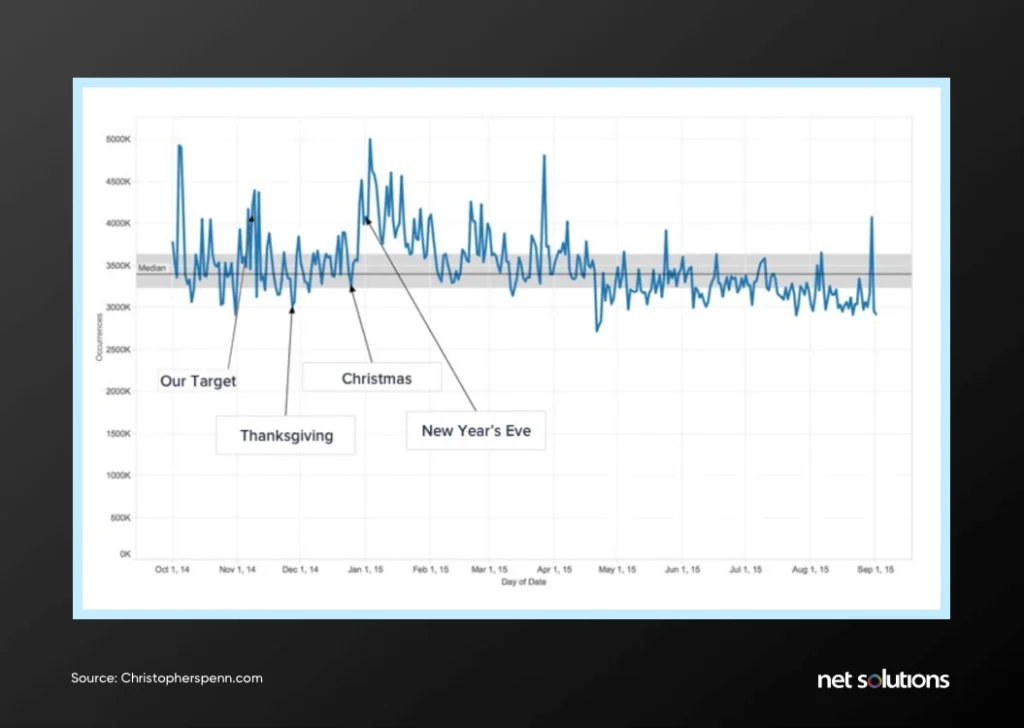
Additionally, incorporating video into the social media marketing strategy to get more eyeballs on their holiday offer is also a good option. According to Wyzowl research, 83% of video marketers believe that videos have increased the average visitors’ time to their website. Similarly, 78% of brands believed video has directly increased their sales.
c. Optimize for mobile devices and platforms
Global eCommerce online traffic on mobile is 2.47 times higher than on desktop. – Salecycle.com
It means mobile apps account for half of the internet traffic on your website, and if your website is not primed for mobile phone users, you’re losing big time.
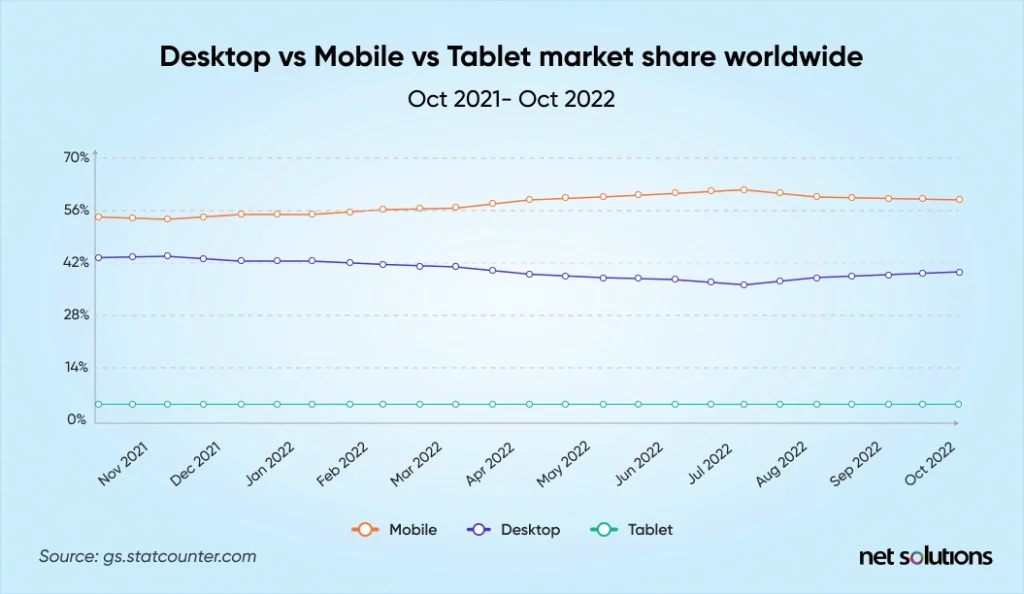
Thus, it has become critical to go mobile with the eCommerce store and add optimization for mobile devices to the holiday eCommerce website checklist. Therefore, capitalize on this trend by optimizing your online store for mobile devices.

Once it’s evident whether the website is optimized for mobile phones, you can reach out to existing customers by sending them special offers that they can avail of from the mobile website.
3. Make customers feel welcome at each step
Imagine how disheartening it would be to go to a physical store and notice a grumpy receptionist or a board hanging there, saying ‘Counter Closed for the Day.’
No one wants to visit places where they don’t feel welcome. Shoppers frequently jump ship even in-store locations when it takes a long time to make a purchase, or the place is not welcoming.
You want your customers to feel welcomed this holiday season as a retailer. You can ensure this by being a little cautious and following the tips we mentioned below.
Meanwhile, our Holiday eCommerce Success Checklist 2021 is a detailed study for boosting sales and making a difference in taking advantage of holiday spending. Click the button below to get our checklist to make the 2021 holiday season the most successful!

a. Make the checkout process easy
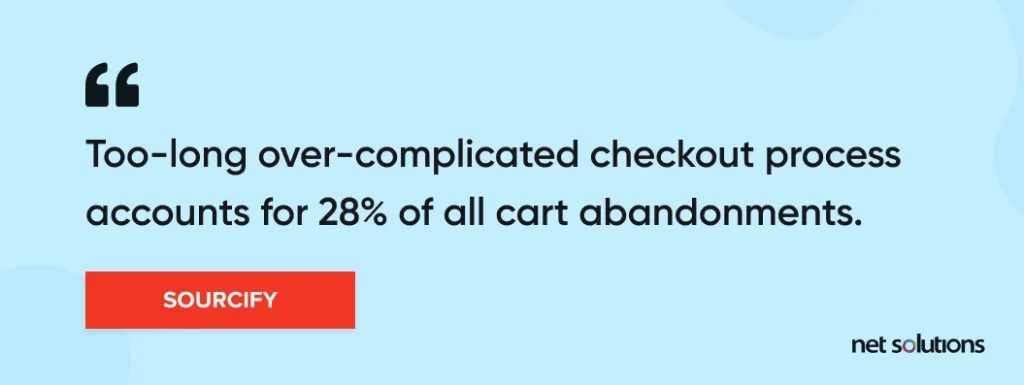
Start with making the checkout process less pestering to let visitors experience a smooth selection, comparison, and finalization. Complicated checkouts are what turn shoppers OFF the most.
Here’s what you can do to make the checkout process hassle-free:
- Convey processes, policies, and terms & conditions.
- Offer various payment options like Net Banking, credit/debit cards, and digital payment solutions – but not at the cost of eCommerce security.
- Save credit/debit card details to ensure users don’t have to enter them every time they buy from your website.
b. Clear Shipping & Delivery Expectations
Nothing hurts more than unfulfilled promises. Hence, it’s better to steer clear of such promises unless you can deliver them. It would help you manage customers’ expectations.
Clearly state if a free shipping offer is not available. If there are extra charges, ensure they’re reasonable and mentioned upfront.
Also, to decide whether to offer free shipping or not, here’s something you must consider:
In a digitized era, where Amazon is planning for anticipatory shipping, it is advised to at least provide a free shipping offer to customers during the holiday sale.

But there’s also another angle to the same story. During the holidays, people are excited to make purchases online and often feel rushed by the limited purchase time. You can utilize this feeling of urgency to make visitors pay a little extra to get faster delivery.
The price sensitivity graph from Kissmetrics reveals that shoppers aren’t as price-sensitive during holiday shopping, as shown at the beginning of the bell curve. Thus, price insensitivity opens the door for retailers to charge extra from their customers if they are eager to get their product early.
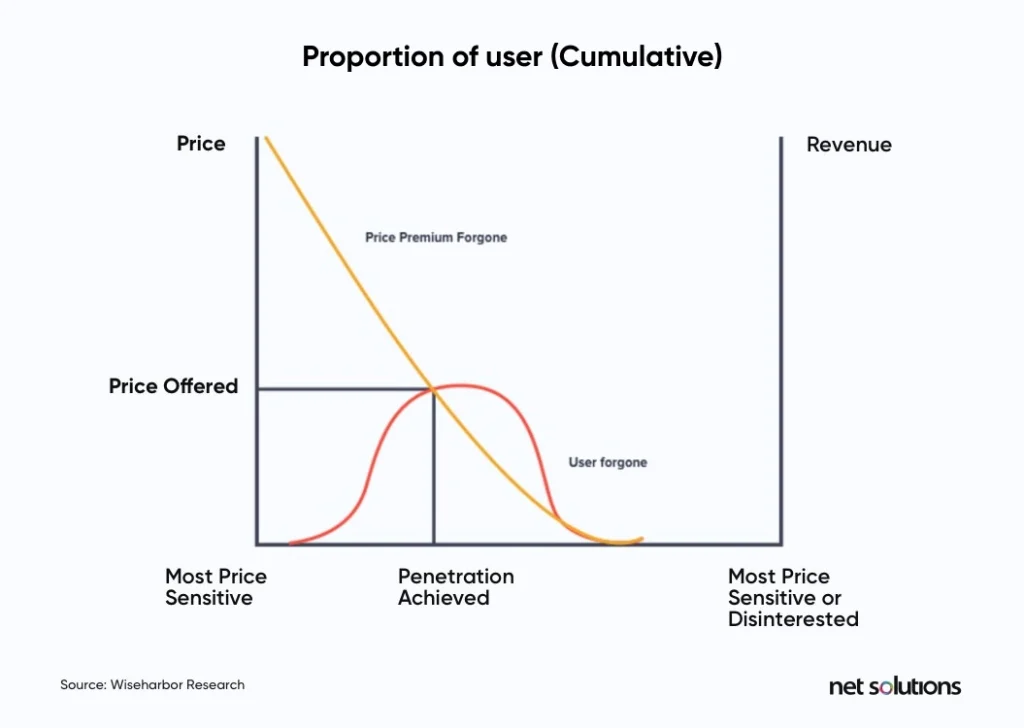
c. Create macros for the most common pre & post-purchase questions
When it’s time for holiday sales, expect a flood of queries from the target customers. They can raise questions about promotions such as:
- Can I combine two discount codes?
- What are the exact terms of the promotion?
They may also pose questions about their order status once they place their order from the website.
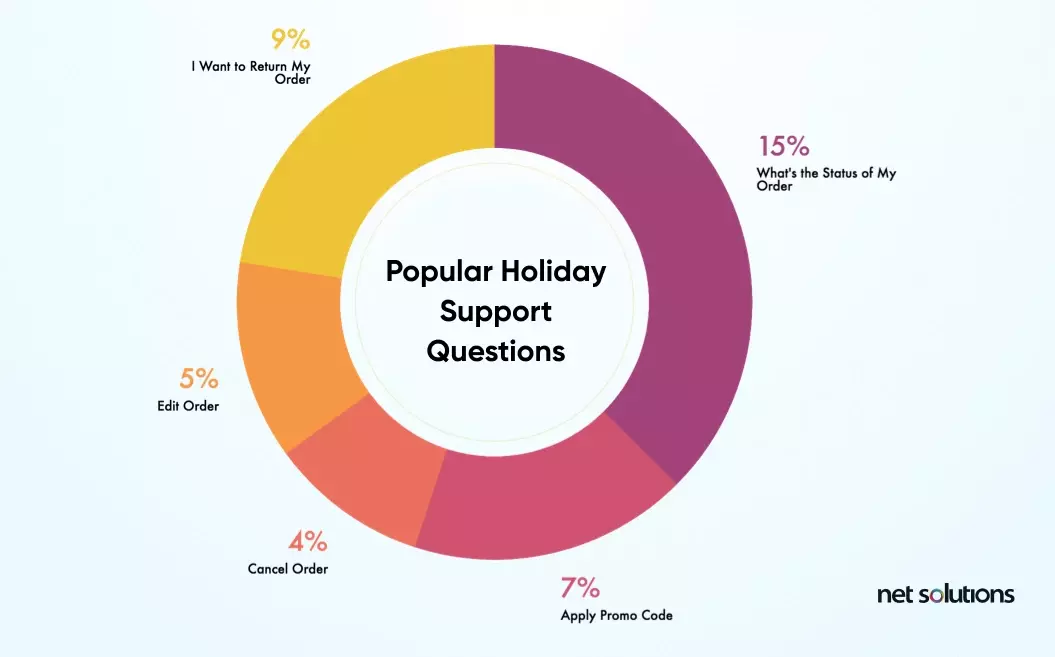
If we believe the stats, the number of tickets rises during the Holiday Season by roughly 67%. Thus, ensure the support team is armed with the proper canned responses, or macros, to address these common questions.
Remember that ‘Support’ is a game of numbers: respond to customers’ queries quickly, lowering the overall response time and increasing customer satisfaction.
d. Diversify payment options
While credit/debit cards are the predominant form of payment options on most eCommerce website solutions, not all shoppers have this facility. Many, especially the millennials, prefer digital wallets or bank-operated peer-to-peer networks like PayPal, Venmo, and Zello to pay for their purchases. These customers would abandon carts if they didn’t find their preferred payment methods on the eCommerce website.
That’s why you must diversify payment options. It would reduce the cart abandonment rate and increase sales.
e. Foster customer loyalty through rewards and loyalty points
Integrating a loyalty program with your e-commerce platform can increase average order quantity by 319%.
Loyal customers are the biggest asset of any business. Fostering customer loyalty is challenging. More than just providing good services and products is required. So many alternatives are available in the market that customers would have no trouble finding someone who delivers better than you.
So, what makes users stay loyal to a brand? Rewards and loyalty points. Our brain associates reward with pleasure. It fosters behavior that makes us feel connected to the brand that offers benefits.
- Members of top-performing loyalty programs are 77% more likely to choose that brand over the competition.
- Loyal customers spend 67% more than their peers.
So, consider offering rewards and loyalty points to shoppers on your eCommerce site this holiday season. It would foster loyalty and bring them back the following year too. This way, you also won’t have to spend a considerable chunk of your time and resources on acquiring customers because it costs 5 to 25 times more to retain a new customer than to retain an existing one.
4. Improve your customer service
Today’s customers are used to living in an online world where they do not have to wait in line or hold their questions until a more convenient time for the company. Instead, they are accustomed to receiving instant gratification.
Anything less will fade in comparison, and if there is one area where businesses want to impress rather than annoy, it is customer service. Following are the ways to improve customer service with the holiday sales season knocking on the door.
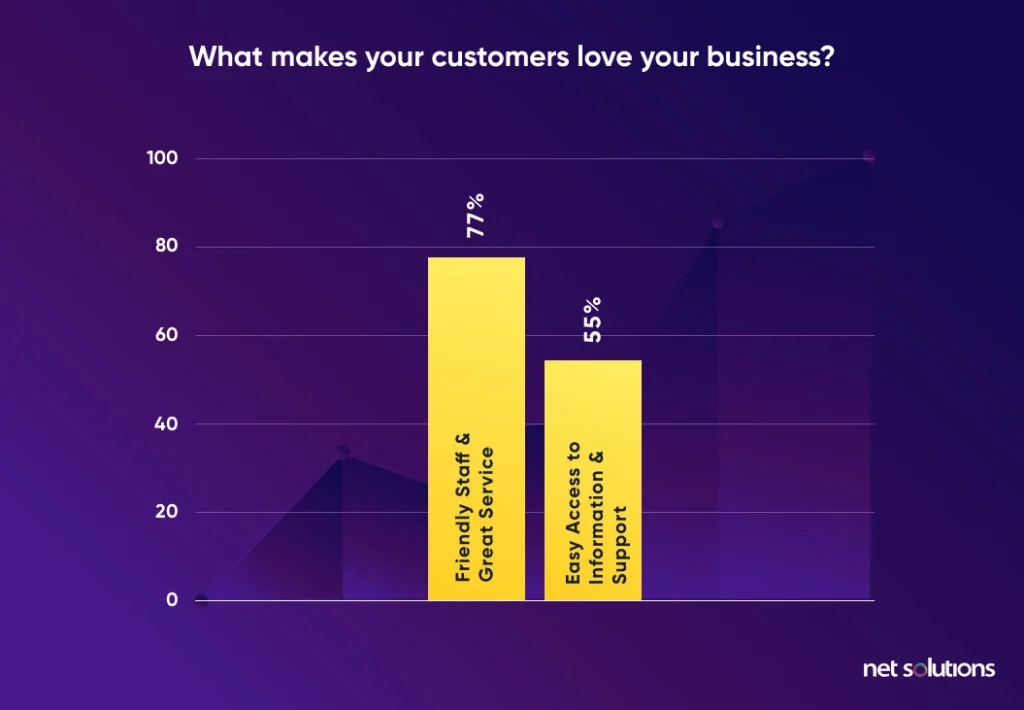
a. Integrate live chat
A survey conducted by Software Advice mentions that millennials expect a quicker response time to their queries. During the holiday season, when all eCommerce websites are flooded with offers, integrating live chat can be an ally in delivering excellent customer service.
Average Customers usually get stuck at the checkout page because they need clarification about the billing address, doubts about the product, etc.
This is why you should consider and get a live chat integrated into your website before the holiday season starts.
Chatbots are revolutionizing customer relationship management (CRM). With AI making such immense advances that benefit many aspects of a business, including CRM, chatbots are the most close-at-hand application of AI that companies can use to their advantage.
b. Highlight return conditions
It is natural that when people buy gifts for others, there can be issues with size, or the recipient does not like the product’s color. Eventually, they would like to return the product in any of these cases. Retailers should make sure their customers can make returns of products easily.
Thus, it is always advised to highlight the return conditions in detail. It builds visitors’ trust and confidence, thereby improving customer loyalty.
Remember, 1/3rd of those ages 23-38 are quick to drop a brand that doesn’t meet expectations.
c. Do better with personalization
Personalization has emerged as one of the critical placeholders among customer experience strategies for businesses across the globe. In eCommerce, for instance, an average consumer’s response toward a recommendation based on his browsing and past purchases on a retail site is primarily favorable.
A shopper feels special when addressed with a personal touch in an email or message.
Since the holiday sales season is about to arrive, Leverage the power of digital experience platforms (DXPs) in improving eCommerce customer experience to connect to various data sources to develop a 360-degree view of the target customer. It helps in tailoring the experience to customers’ needs, which leads to improvement in conversions.
d. Integrate ERP systems to maximize efficiency
You can better manage inventory, predict product demand, and fulfill purchases on time by integrating your eCommerce website into an ERP system. You can also keep track of customers and automate marketing communications to ensure they meet your business goals. For example, if someone abandons a shopping cart, they may receive a reminder email. This way, you can significantly boost your sales.
Important points to remember before, during, and after the holiday season
“You will only fail to learn if you do not learn from failing.” -Stella Adler
Learning from mistakes is crucial in an eCommerce business. An intelligent eCommerce player will ponder upon the following points for a sure-shot success in the upcoming holiday season sale:
a. Keep an eye on the competition
Paying close attention to competitors’ marketing efforts can help gather ideas and build a competitive marketing campaign for holiday deals. The easiest way to keep a hawk-eye on the competition is by subscribing to their email list.
Study the types of emails they forward and how frequently they send them. But keep in mind: don’t get too inspired. Just understand their strengths and weaknesses and use them as an advantage.
VisualPing helps in monitoring any changes that the competitors make to their websites.
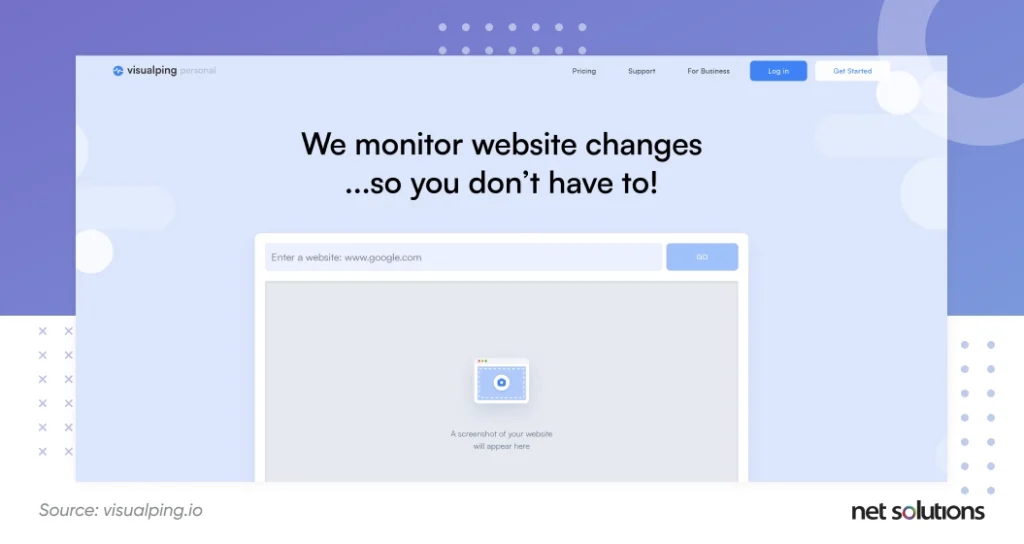
b. Create contingency plans
Unfortunately, online retailers should have proper backups in place if something goes awry. For instance, how to handle those situations if the tied shipping company becomes too busy or the products get sold out earlier than expected?
These situations are not to instill fear but rather to prepare eCommerce websites to handle the worst-case scenarios. Create a contingency plan wherever possible. It is much easier to control the planning now than to find the way out amid the most significant sales season of the year. Thus, keeping a contingency plan as one of the vital components of the holiday eCommerce checklist is critical for the eCommerce business. What to learn from Amazon’s technical glitches in the year 2018? If any Amazon visitors tried to purchase from Amazon within the first 7 hours of Amazon Prime Day, 2018, they might have met with one of the most adorable Prime Day Dogs, saying, “Sorry, something went wrong.”
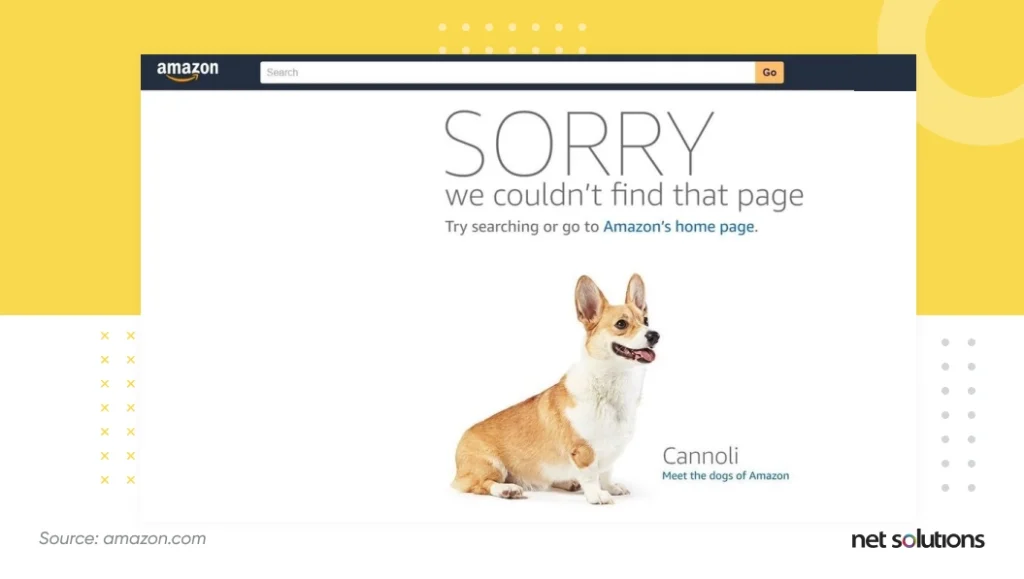
After going through Amazon’s internal documents, CNBC reported the reason behind Amazon’s technical glitch: they did not have enough servers to handle all of their customers.
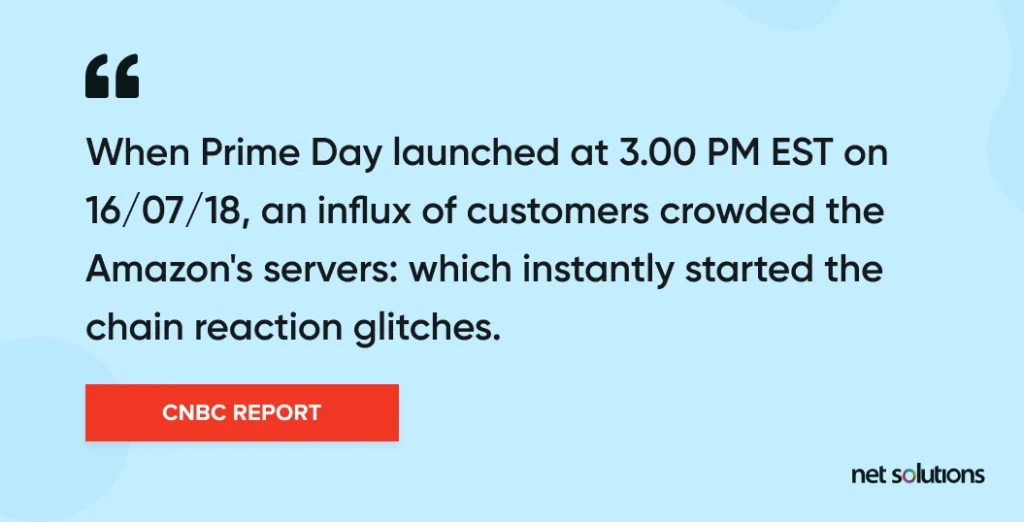
Amazon had an auto-scaling feature meant to work when the demand was too high. However, their core system failed.
Here’s what we can learn from this? Glitches happen; creating a contingency plan in similar situations is essential if things do not go according to the plan.
c. Keep updating website inventory to avoid disheartened customers
One of the critical parameters required to get ready for the holiday season sales is ‘Inventory Management.’ Prepare inventory both in-store and online in advance. Use data analytics to prepare the list mapped according to the local market.
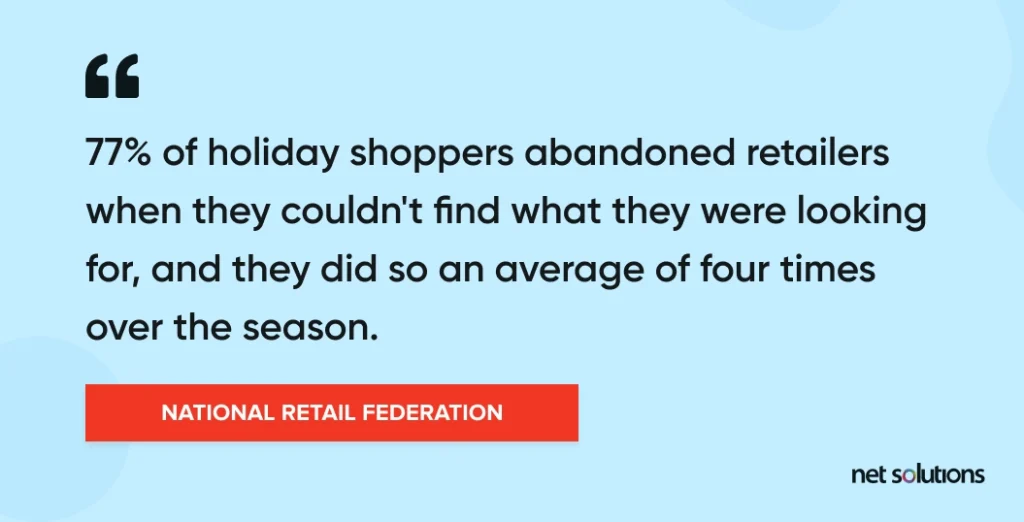
Apart from helping inventory management, real-time inventory analysis can also help retailers facilitate omnichannel purchases, creating a cohesive physical and digital experience.
Frequently Asked Questions
Cyber attacks like hacking, misuse of personal data, monetary theft, phishing attacks, unprotected provision of services, and credit card fraud are one of the biggest threats from which you must protect your online store during this holiday season. They not only cost you a considerable amount of money but also take on your reputation as a reliable eCommerce store.
Discounts, gifts, point of purchase (PoP) displays, contests, rebates, and sweepstakes are six ways to promote sales.
- 1. Prospecting: Finding potential customers and deciding whether they need your product or service.
- 2. Preparation: Prepare for initial contact with the potential customer by researching the market and collecting all relevant information regarding your product or service.
- 3. Approach: Contact the customer either on the phone or in person.
- 4. Presentation: Demonstrating how your product or service meets their business requirements.
- 5. Handling objections: Listening to and addressing your potential customer’s concerns.
- 6. Closing: Getting the decision to move forward with the deal by offering a choice, giving an extra option, or creating urgency.
- 7. Follow-up: Staying in touch with potential customers for repeat business.
- Black Friday [2022: Friday, November 25]
- Small Business Saturday [2022: Saturday, November 26]
- Cyber Monday [2022: Monday, November 28]
- Giving Tuesday [2022: Tuesday, November 29]
- Green Monday [2022: Monday, December 12]
- Christmas Day [2022: Sunday, December 25]
- Boxing Day [2022: Monday, December 26]
- New Year’s Day [2023: Sunday, January 1]



